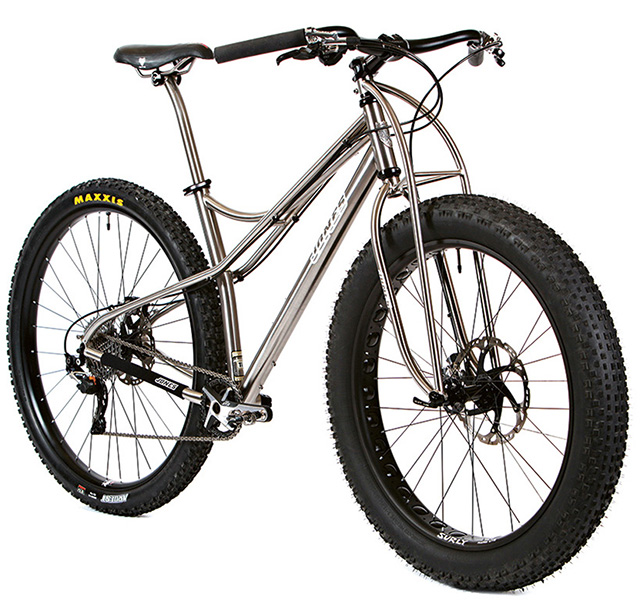
This is, currently, as good as it gets. The titanium Spaceframe and Truss fork deliver the rigid bicycle that is anything but. Laterally stiff to deliver the power with a vertical compliance that softens the ride? Yes, but this is only the icing on the cake. The Jones geometry ensures the best handling bike there is. It really does need to be ridden to be appreciated. Titanium, used here, provides strength, stiffness and compliance in a light, durable bike. The Jones geometry makes it all worthwhile.
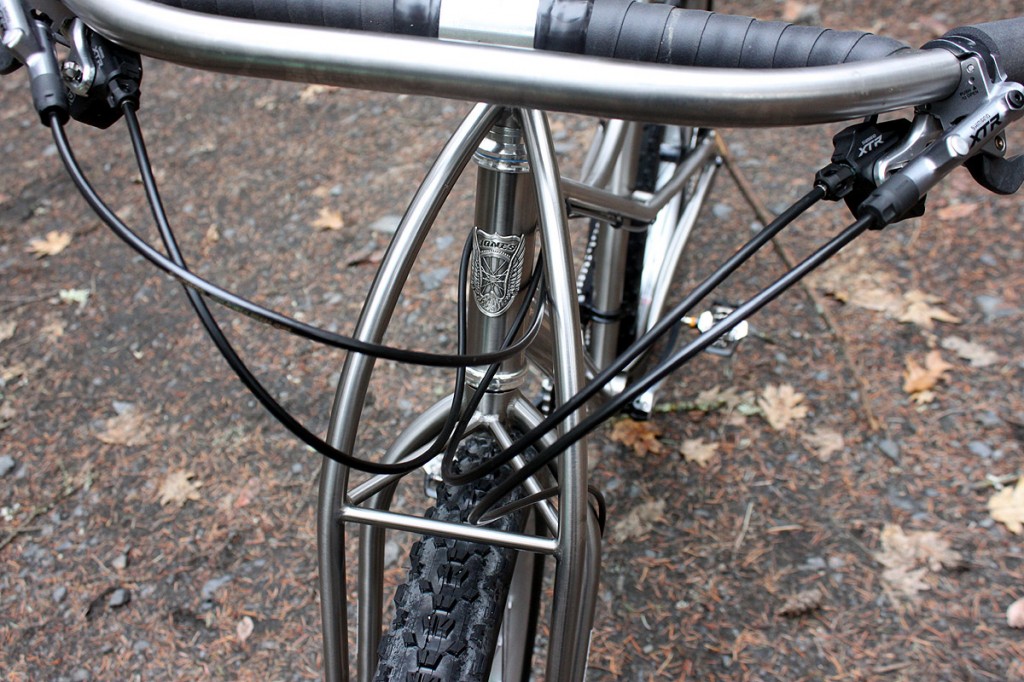
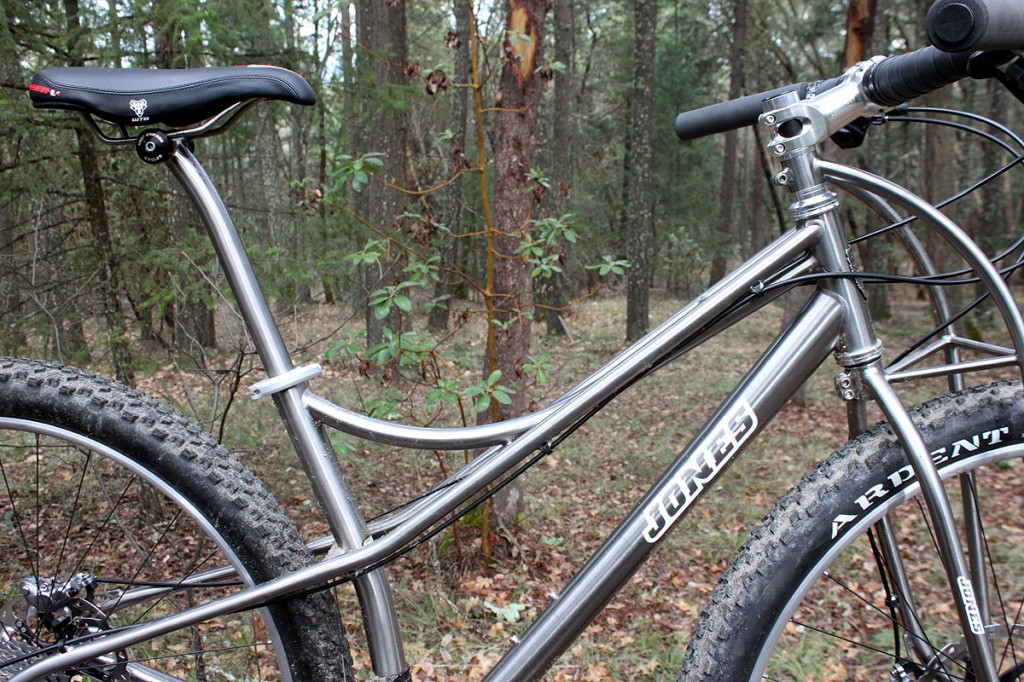
The best a Jones can get?! It’s been a couple of years since I last had my Titanium Spaceframe in stock. Jones Bikes isn’t a massive company, our time and resources are finite and our production runs are always small – limited quantities – but I’m very pleased (and just plain excited) to have this bicycle with us again. I’ve already sent a few out to customers who pre-ordered framesets and I’m building wheels and complete bikes for some others. The pre-shipping shake-down test rides have got me smiling and then some – I do like this bicycle a lot. I think it’s the best Jones I’ve ever created.
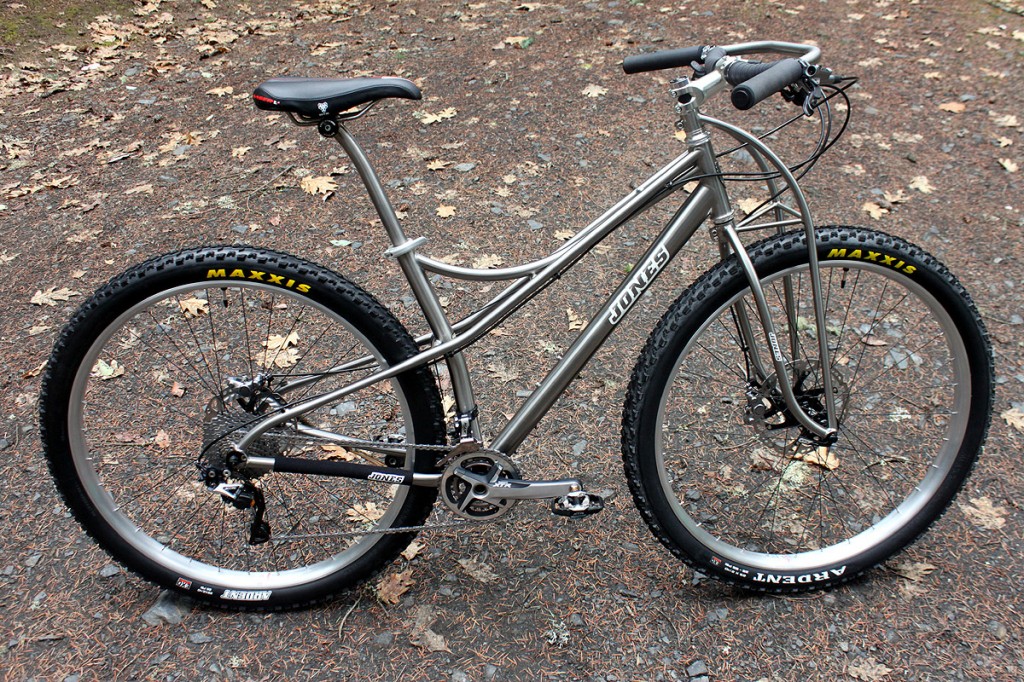
It’s a bicycle. You can ride it (hard) off-road, as a mountain bike, on road and dirt as a (fully-laden) touring bike, with gears or as a singlespeed. You can run a fat front tire, you can run slicks – it really is extremely capable. Versatility without compromise. Pure bicycle.
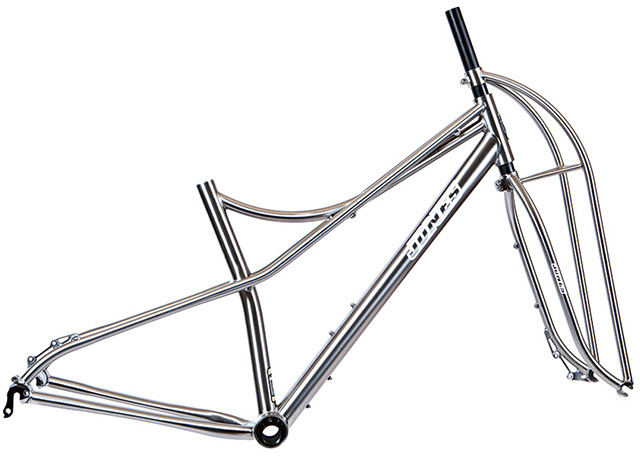
The tubing is most certainly to my individual specification. The down tube is a big 1-3/4 inch diameter custom butted tube. The twin top tube / seatstays and their cross pieces create a superb structure down through the frame – for assured handling and efficient pedaling and a smooth ride. The seat tube (and the geometry) places the rider within the bike for instinctive control and ride-all-day comfort. I’ve added a gusset to the bottom bracket / chainstay junction too which stiffens things up. The chainstays are beefed up a little too. It’s an excellent blend of stiffness, strength and comfort. The tubing diameters, and my unique Spaceframe design give the bike tremendous lateral stiffness and vertical compliance. I’ve a video (my YouTube channel has it here) that shows a Spaceframe at work out on the trails!
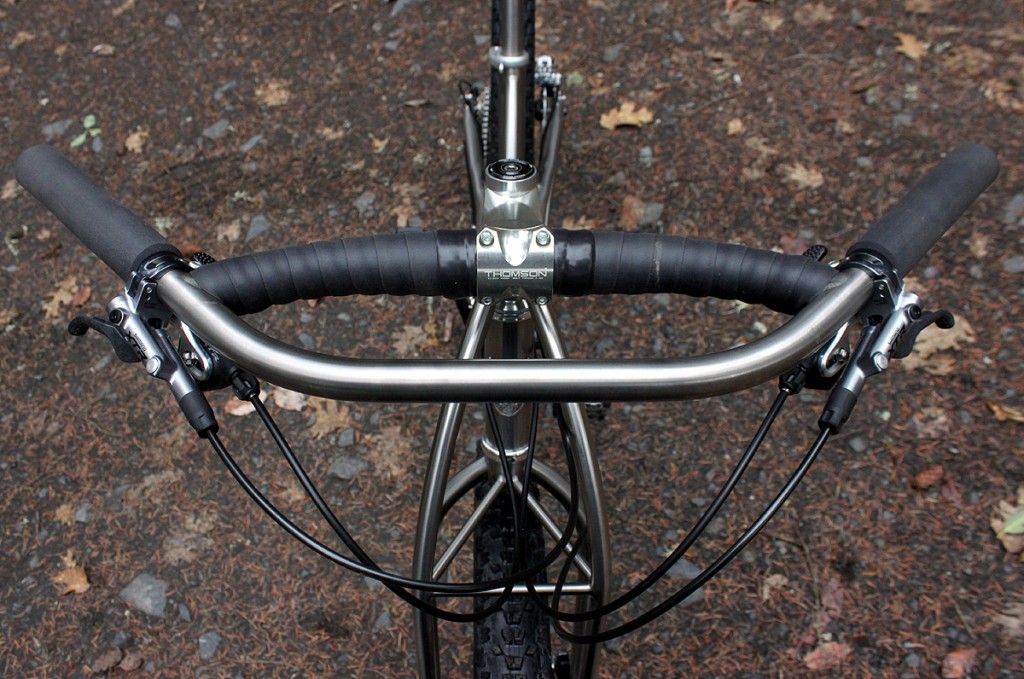
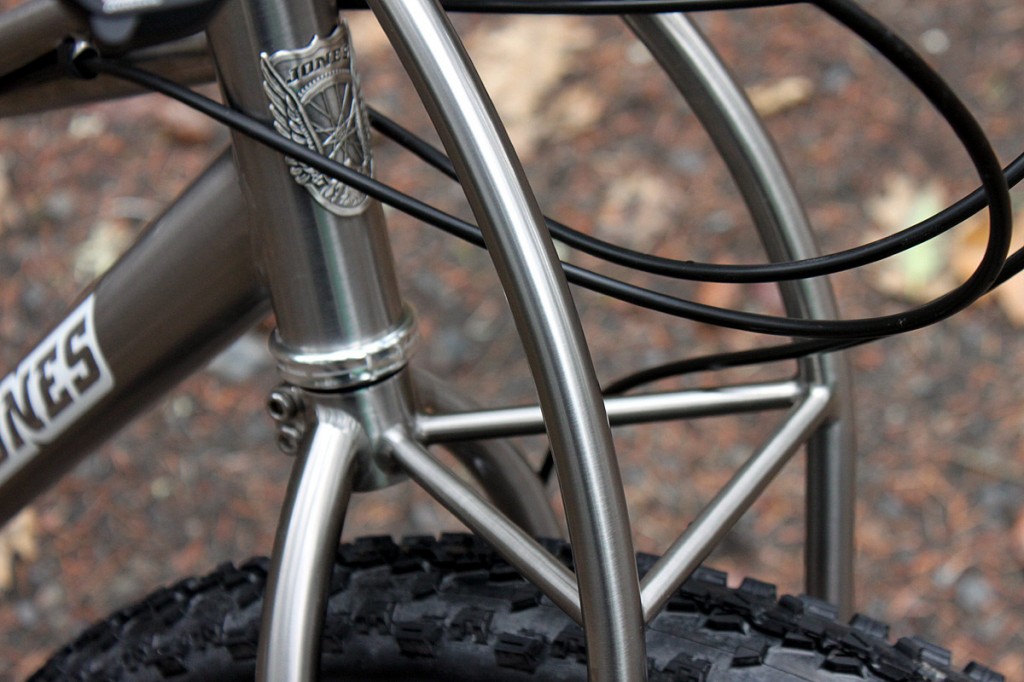
The Ti Spaceframe is available with the Jones Ti Truss fork or the steel Jones unicrown fork. The forks are spaced for the Jones 135mm front hub and work with standard 29er tires as well as accommodating 26×4″ Fat tires and several 29+ (3″) variants (and, at the rear, the Ti Diamond frame has room for a 2.4″ Ardent tire on a 50mm rim).
My steel Unicrown is a great fork (the best steel unicrown available?) but the Truss fork is just something else – for hard, aggressive riding its precise steering and exceptional characteristic under heavy-braking make it the obvious choice. I put an awful lot of time, money, prototyping and testing (and then more testing) in to its development and it is something I am very proud to have created. It is unique.
The Unicrown in many situations is perhaps a little more comfortable (if you’re not braking hard off-road as much) and is certainly a good option for adventures and travel – with its low-rider rack mounts – and (as it can tuck under the frame when packing the bike) is easier to transport. The ‘conventional’ Unicrown will suit the majority of road, touring and urban riding. The Truss is there for riders wanting to shove some envelopes with their (off-road) riding or on the road to save weigh and have more precise handling. I can not say that one fork is for dirt and the other for street. They are different and both a valid choice.
You can buy a Titanium Spaceframe in the store or contact me if you have questions.
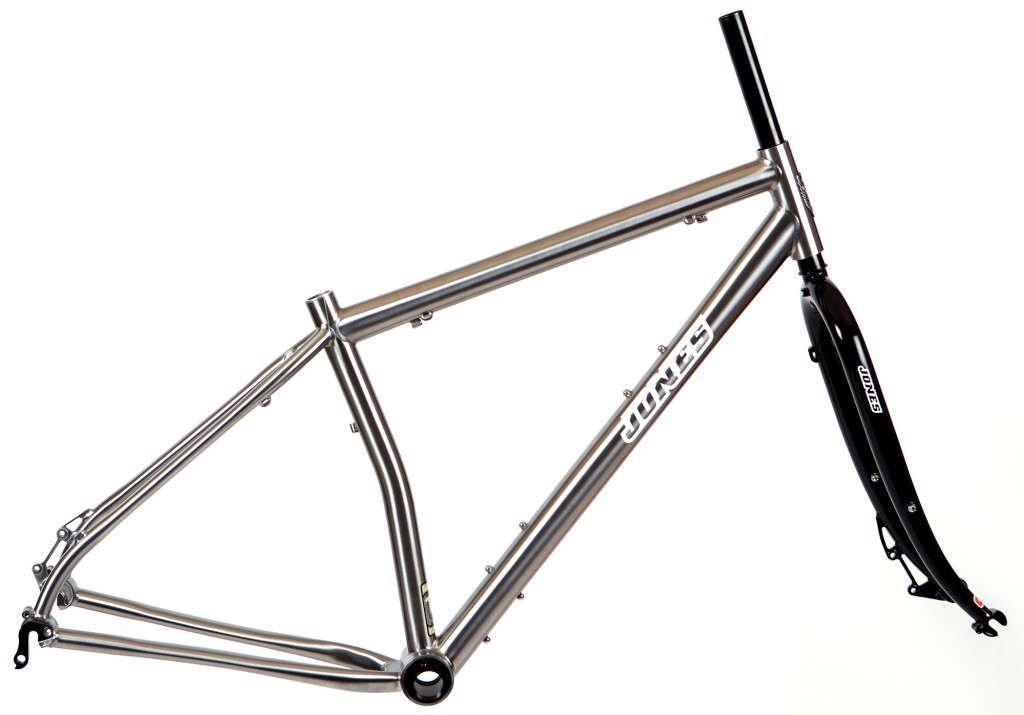
I wrote this (below) when we had the Ti Diamond frame (above) available.
It applies to this bike too and is worth repeating. The Ti Diamond post is here.
All my bikes are ‘rigid-specific’ – not ‘suspension corrected’*. This isn’t the most helpful label as it only exists in comparison to ‘suspension-specific’ and that’s just something that gets in the way of rigid specific bicycle design. I am looking to design bicycles that are capable, comfortable, handle superbly and are a joy to ride. The starting point is a blank piece of paper. Not a ‘blank’ piece of paper with a suspension fork already inked in place. If you assume a rider might be fitting a suspension fork to their bike (even if you offer it with a rigid fork to begin with) then you’re compromising the geometry of the frame set and the quality of the ride. This is only true for when it is set up rigid. It is not a compromise when the frame has a shock (since suspension corrected means “to be designed for a shock”. It is a compromise when you use a suspension corrected geometry for a rigid bike).
Suspension corrected rigid bikes have longer and therefore, heavier, weaker and more flexible forks than shorter rigid specific bikes – eg Jones.
Suspension corrected rigid bikes have higher and shorter head tubes so they are weaker and more flexible here and the stand over height is higher towards the front.
Suspension corrected rigid bikes must have steeper seat tube angles and longer top tubes to prevent toe overlap with the front wheel – this is less comfortable and does not handle as well (more so for 29ers than 26”).
Suspension corrected rigid bikes must have a rigid fork that matches the geometry of a suspension fork – design ‘lock’ – there is no opportunity to design a fork for the frame.
Suspension corrected rigid bikes have higher bottom brackets and a higher center of gravity because it is designed to go down as your fork compresses. Rigid bikes can be low ‘all the time’ for better balance.
Suspension corrected rigid bikes must have a longer down tube to reach up to where the head tube needs to be to match the longer fork – this is another compromise… And it needs to have a kink near the head tube so the wide suspension fork crown has clearance.
The “rigid specific” Jones frames have a shorter, straight down tube that is attached to a taller head tube. Stiffer. Stronger, lighter. I could go on. Rigid specific bikes have geometry that makes sense for the ride, wheel size and rider without compromise.
Bicycle+Cyclist=Cycling.
* Suspension-Corrected (Fork) – suspension forks have more room above the top of the tire, to allow the suspension to move. Frames built for suspension forks are designed so that the bottom end of the head tube will normally be higher up to make room for the suspension fork’s travel. Suspension-corrected rigid forks mimic this geometry: they have longer blades to hold the head tube up to the same height a suspension fork would. If you desire to replace a suspension fork with a rigid fork, you should opt for a ‘suspension-corrected’ rigid fork to preserve the frame’s normal geometry… http://sheldonbrown.com/gloss_st-z.html




